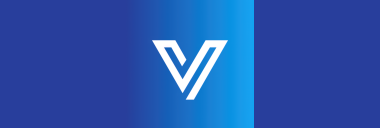Bruker Announces First 1.2 GHz NMR Installation in the United States at The Ohio State University - Funded by the U.S. National Science Foundation
Novel GHz-class NMR systems are enabling unprecedented life science and materials research in functional structural biology, drug discovery, metabolomics and cleantech research.

New 1.2 GHz AVANCE® NMR system at The Ohio State University (Photo: Business Wire)
Ultra-high field NMR is complementary to other structural biology technologies in that NMR can measure functional molecular dynamics and structural rearrangements for functional structural biology. Key areas of NMR applications include organic chemistry, macromolecular structure determination, drug-target binding, protein-protein or protein-RNA interactions – all at close to native conditions and in solution, or even in situ in cell membranes. NMR also has unique capabilities to elucidate ‘hidden’, short-lived protein transition states from healthy to disease biology, e.g., in active enzymes or in the onset of protein aggregation in neurodegenerative diseases. Finally, many key proteins in cell biology, e.g., transcription factors, or proteins implicated in cancer, infectious disease or neurodegeneration are intrinsically disordered, or partially disordered, and GHz-class NMR enables pivotal research of functional molecular disorder in many areas of pathobiology.
The
The 1.2 GHz AVANCE® NMR spectrometer is a state-of-the-art instrument that enables high-resolution liquid and solid-state NMR experiments. It will be used by researchers at Ohio State and across the
Dr. Rafael Brüschweiler, a professor of chemistry and biochemistry at The Ohio State University, and PI of the National Gateway Ultrahigh Field NMR Center, is a leading expert in NMR. His cross-disciplinary research has been instrumental in the development of new techniques to understand the role of protein dynamics and interactions, as well as to analyze complex biological mixtures in metabolomics.
Professor Brüschweiler stated: “The installation of the 1.2 GHz NMR instrument gives us the capability to explore the structure and dynamics of biological molecules at an unprecedented level of detail. This breakthrough will enable significant advances in our understanding of how these molecules function, ultimately leading to the development of new treatments for diseases. We are excited about the possibilities that lie ahead and look forward to the discoveries that this new technology will facilitate."
Dr. Falko Busse, President of Bruker BioSpin, described the installation of the OSU 1.2 GHz NMR as a milestone: “We are honored to work with The Ohio State University to bring this groundbreaking technology to
The Ohio State University has the first 1.2 GHz NMR in
NSF has also funded two 1.1 GHz NMRs, with a solid-state research system recently installed at the University of
Finally, with high interest recently also in compact, single-story 4 Kelvin 1.0 GHz NMRs, there are now nine 1.0 GHz systems installed at customer sites, with six in
About Bruker Corporation (Nasdaq: BRKR)
Bruker is enabling scientists to make breakthrough discoveries and develop new applications that improve the quality of human life. Bruker’s high performance scientific instruments and high value analytical and diagnostic solutions enable scientists to explore life and materials at molecular, cellular and microscopic levels. In close cooperation with our customers, Bruker is enabling innovation, improved productivity and customer success in life science molecular and cell biology research, in applied and pharma applications, in microscopy and nanoanalysis, as well as in industrial applications. Bruker offers differentiated, high-value life science and diagnostics systems and solutions in preclinical imaging, clinical phenomics research, proteomics and multiomics, spatial and single-cell biology, functional structural and condensate biology, as well as in clinical microbiology and molecular diagnostics. For more information, please visit: www.bruker.com.
View source version on businesswire.com: https://www.businesswire.com/news/home/20231219164773/en/
Investor:
Justin Ward
Sr. Director, Investor Relations & Corporate Development
Bruker Corporation
T: +1 (978) 313-5800
E: Investor.Relations@bruker.com
Media:
Markus Ziegler
Sr. Director and Head of Group Marketing
Bruker BioSpin
T: +49 172 3733531
E: pr@bruker.com
Source: Bruker Corporation








